Eastern State Penitentiary
Introduction
Text-to-speech Audio
What was once the most infamous penitentiary in the United States has left behind a chilling and haunting past. This Penitentiary is located in Philadelphia, Pennsylvania, and opened in the 1800s, eventually gaining its historical landmark status. A big part of its creation was due to the Philadelphia Society for Alleviating the Miseries of Public Prisons and the famous social thinker Michel Foucault. During its almost 150 years of operation, it housed approximately 75,000 inmates and many horrific deaths. After its opening, many famous people traveled to observe this new penitentiary. It is so significant because of its experimentation with new techniques of reformation. This created much controversy and would leave an everlasting legacy, causing people to visit today to get a glimpse of tragedy and be spooked by the ghosts that allegedly reside there.
Images
Eastern State Penitentiary Birds Eye View
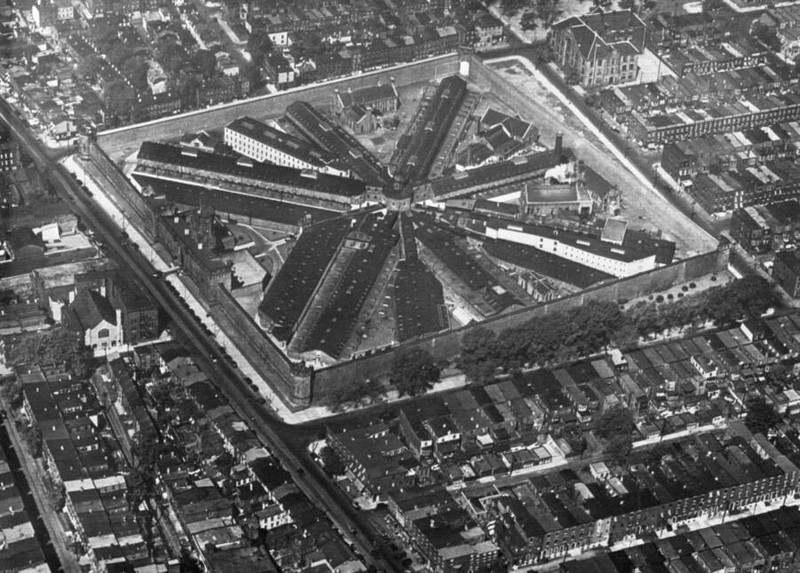
Eastern State Penitentiary Death Row
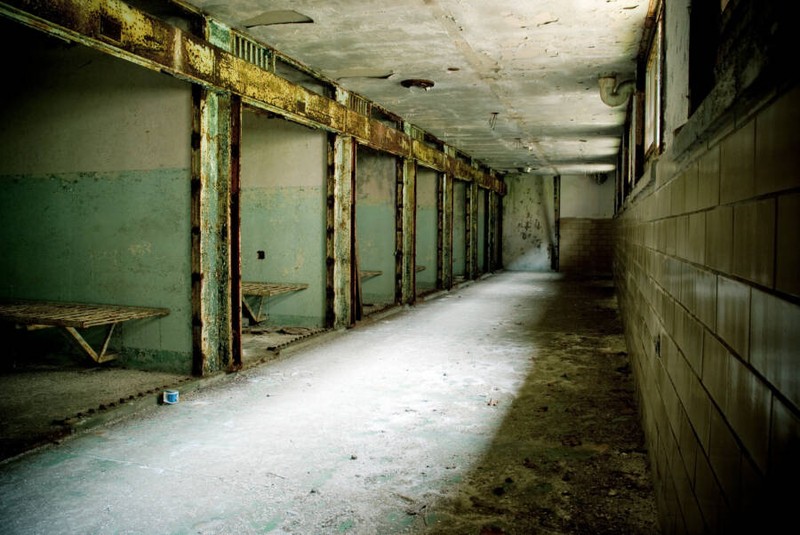
Al Capone's Cell at Eastern State Penitentiary
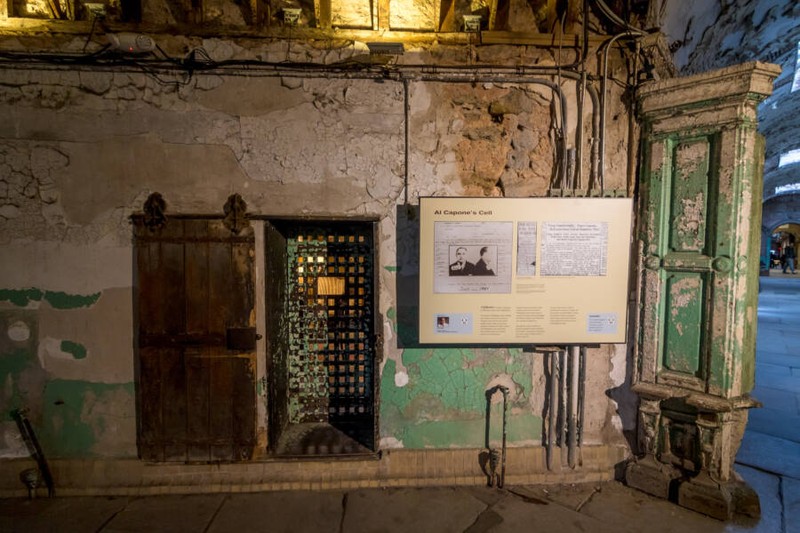
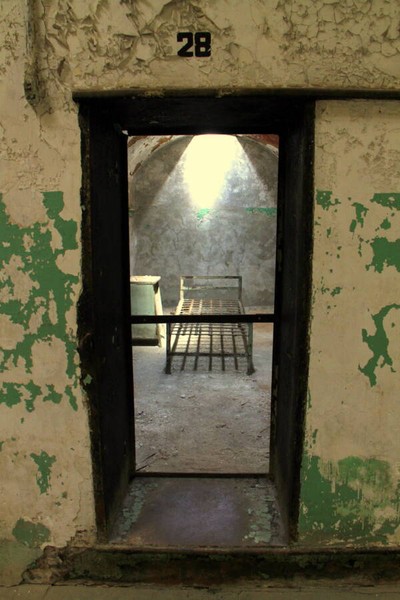
The Mad Chair at Eastern State Penitentiary
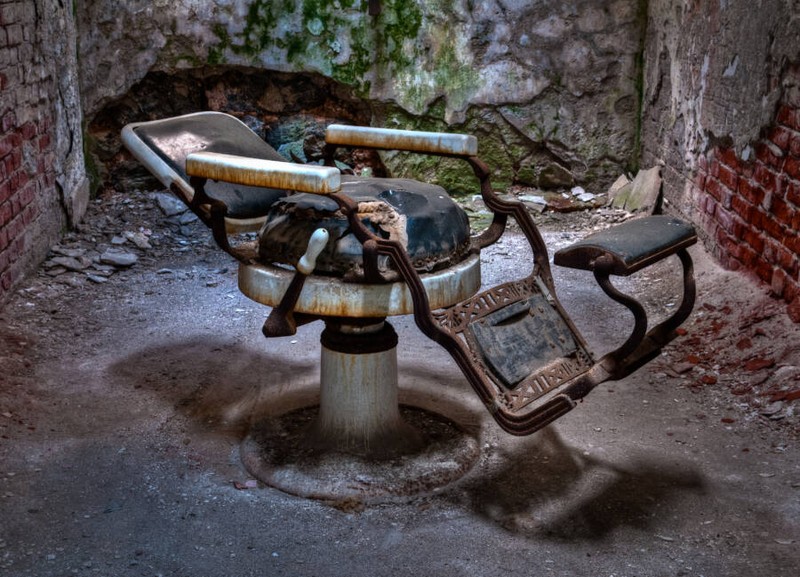
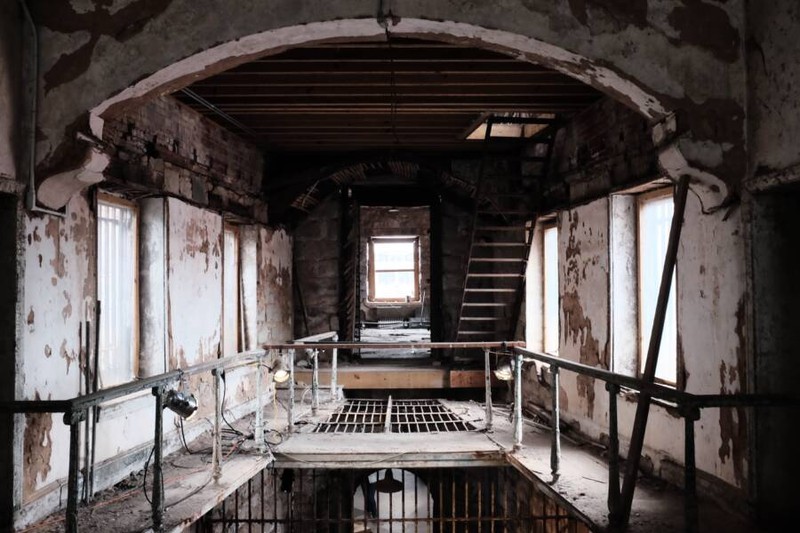
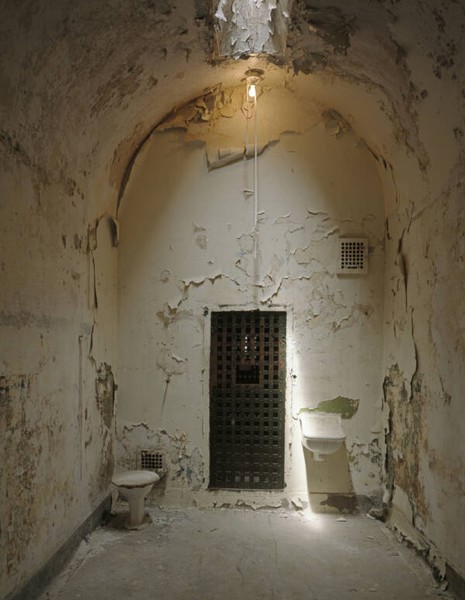
Historical Landmark Sign for Eastern State Penitentiary
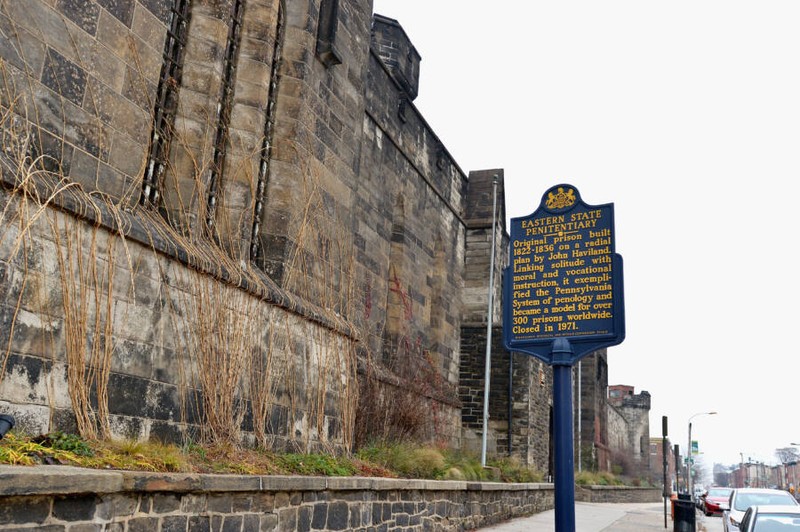
The Eastern State Penitentiary Entrance
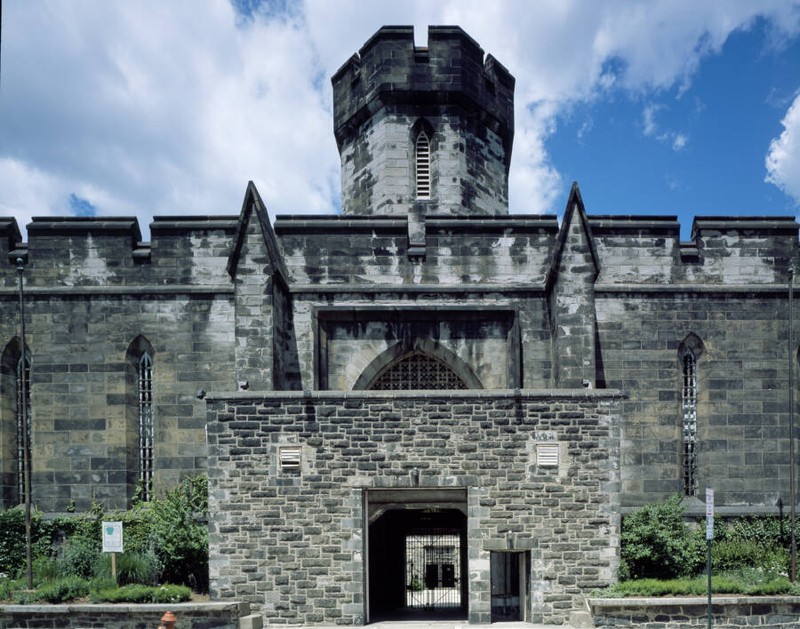
Backstory and Context
Text-to-speech Audio
There are many different factors that contribute to the Eastern State Penitentiary’s historical and memorable significance. This penitentiary was born in 1829 in Philadelphia from competing motivations of control and misery reduction, which attracted many including Michel Foucault. Although the Eastern State Penitentiary was closed decades ago due to its unsuccessful process of reformation in terms of control and misery reduction, it leaves behind a legacy that will last beyond lifetimes. It was eventually sanctioned as a historical landmark in 1965 primarily for its architecture, a designation which starkly contrasts its reputation for being a place where unethical practices took place.
The Eastern State Penitentiary was built on the hopes of creating better and more sustainable prison practices when compared to previous prisons, such as the first-ever jail in the United States, the Walnut Street Jail, known for its horrible treatment of inmates. The Philadelphia Society for Alleviating the Miseries of Public Prisons concluded that these conditions could not continue, and from this, the idea for the Eastern State Penitentiary was born. This penitentiary was one of the many discussed by the famous social thinker, Michel Foucault. The penitentiary was also created because those who believed in prison reform wanted to gain more control over inmates. They created this climate of control by having each inmate put into solitary confinement cells. They hoped these tactics would aid in proper reform and help inmates think about what they have done, feel remorse, and rehabilitate back into society, which later became known as the Pennsylvanian system. The Eastern State Penitentiary was also extremely technologically advanced for its time, including seven different wings of individual cell blocks that had features such as heating and indoor plumbing.
Though the motivations behind the Eastern State Penitentiary were good, the horrific incidents that took place within its walls did not live up to those intentions. One of the main goals of the penitentiary was to place inmates in solitary confinement, which they hoped would create a place of spiritual awakening and remorse to lead to rehabilitation. Although this was good in theory, solitary confinement is now used as a form of punishment and has often made people become mentally ill or unstable. Upon its opening, the penitentiary became a popular spot for people to visit from across the world, hoping to see what this new type of prison system was like. Alexis de Tocqueville, famous for studying and writing about prison systems, and Gustave de Beaumont, a French politician, traveled to visit the penitentiary in 1831. After visiting, they determined that the approach taken was genius in that solitary confinement was sure to work how they hoped it would. On the other hand, the famous author Charles Dickens did not agree with this stance, as he felt that solitary confinement would not aid inmates in rehabilitation, and instead would make the inmates more unstable than they were when admitted. Years later in the mid-50s, a deputy commissioner in New York City’s Department of Correction wrote an essay describing the prison system, which included that of Eastern State Penitentiary, stating that the prison systems of the United States could not make up its mind because it was partially supported rehabilitation and partially supported punishment, and this would not make for a successful prison.
Again, even though part of the reason behind creating Eastern State Penitentiary was to treat inmates better than those of the Walnut Street Jail, there was still no shortage of horrific events that occurred, contributing to its shut down in 1971. The inmates that the penitentiary housed were various types of criminals including the famous mobster, Al Capone. Some of the inmate’s harsh punishments included a bath where they were submerged, then hung outside in freezing temperatures causing ice to form on their skin, chairs that tied inmates in so tightly they would lose circulation and had to have their limbs amputated, and a place called “the hole” where there was no light, human contact, food, and little air. In 1833, public controversy erupted because of what happened to a prisoner named Mathias Maccumsey. Maccumsey died from a torture device called the “iron gag,” which was invented to prevent the prisoner from speaking. This gag was fitted over Maccumseys tongue and attached to his arms, pinning them behind his back, causing every movement to dig the gag further into his tongue, which ultimately led to his death. From this death alone, the Eastern State Penitentiary took an enormous blow in public favor and credibility. Although this incident is far from the only death, it is one of the most notable and is what caused many to have concerns about the penitentiary’s ethical standing.
Eastern State Penitentiary was far from the perfect prison system, but that does not mean that all is lost in terms of what we can learn from it. Although Eastern State Penitentiary closed in 1971, it leaves behind a legacy full of meaning and potential, including how prisons can be more successfully run. A few years earlier, riots broke out due to the terrible treatment of inmates, which was the catalyst for the penitentiary eventually closing. Upon its closure, remaining inmates were moved to the state correction institution at Graterford, Pennsylvania. The penitentiary is currently being preserved by the Masonry Academy and headed by Tynerra Brown. Brown is working to preserve the architecture while employing previous Philadelphia inmates, giving a steady job to those who have struggled to find employment after release. Today, Eastern State Penitentiary is a popular tourist destination for people to look upon the past and experience the “haunting” from former prisoners. Certain cell blocks are known for reported ghost sightings and others for cackling laughs and echoes, with the Penitentiary even being featured on an episode of Ghost Adventures. It is safe to say that the Eastern State Penitentiary is rich in history and is far from being forgotten.
Sources
Crampton, Jeremy W. (2007, June 30). Eastern State Penitentiary. Foucault blog. Retrieved November 30, 2021, from https://foucaultblog.wordpress.com/2007/06/30/eastern-state-penitentiary/.
Dalrymple, Laurel. “Is Eastern State Penitentiary Really Haunted?” NPR. NPR, October 24, 2013. https://www.npr.org/2013/10/24/232234570/is-eastern-state-penitentiary-really-haunted.
Foreman, Amanda. “For Punishment or Penitence?” The Wall Street Journal. Dow Jones & Company, September 17, 2021. https://www.wsj.com/articles/for-punishment-or-penitence-11631901244.
“Historic Philadelphia Tour: Eastern State Penitentiary.” ushistory.org. Independence Hall Association. Accessed October 19, 2021. https://www.ushistory.org/tour/eastern-state-penitentiary.htm.
History.com Editors. (2009, November 9). Alexis de Tocqueville. History.com. Retrieved November 30, 2021, from https://www.history.com/topics/france/alexis-de-tocqueville.
Janofsky, Jennifer Lawrence. “Eastern State Penitentiary.” Encyclopedia of Greater Philadelphia. Rutgers University, 2015. https://philadelphiaencyclopedia.org/archive/eastern-state-penitentiary/.
Kelly, E. (2020, April 5). 44 photos of Philadelphia's historic Eastern State Penitentiary. All That's Interesting. Retrieved November 30, 2021, from https://allthatsinteresting.com/eastern-state-penitentiary.
Magazine, Smithsonian. “Eastern State Penitentiary: A Prison with a Past.” Smithsonian.com. Smithsonian Institution, September 30, 2008. https://www.smithsonianmag.com/history/eastern-state-penitentiary-a-prison-with-a-past-14274660/.
Melamed, Samantha. “On-the-Job Training Preserving Philly's Most Historic Prison Offered to Women, People of Color and Formerly Incarcerated.” https://www.inquirer.com. The Philadelphia Inquirer, July 12, 2021. https://www.inquirer.com/news/philadelphia-eastern-state-penitentiary-preservation-trades-masonry-20210705.html.
The Editors of Encyclopedia Britannica. (n.d.). Al Capone. Encyclopædia Britannica. Retrieved November 30, 2021, from https://www.britannica.com/biography/Al-Capone.
“Timeline.” Eastern State Penitentiary Historic Site. Eastern State Penitentiary. Accessed October 19, 2021. https://www.easternstate.org/research/history-eastern-state/timeline.
United States Department of the Interior. (n.d.). Pennsylvania Philadelphia - npgallery.nps.gov. National Register of Historic Places. Retrieved December 14, 2021, from https://npgallery.nps.gov/GetAsset/b208f012-8c79-4dc8-9986-d3ec80c729c1/
Weiser-Alexander, K. (2021, August). Eastern State Penitentiary, Philadelphia. Legends of America. Retrieved November 30, 2021, from https://www.legendsofamerica.com/eastern-state-penitentiary-philadelphia/.
https://allthatsinteresting.com/eastern-state-penitentiary
https://allthatsinteresting.com/eastern-state-penitentiary
https://allthatsinteresting.com/eastern-state-penitentiary
https://allthatsinteresting.com/eastern-state-penitentiary
https://allthatsinteresting.com/eastern-state-penitentiary
https://allthatsinteresting.com/eastern-state-penitentiary
https://allthatsinteresting.com/eastern-state-penitentiary
https://allthatsinteresting.com/eastern-state-penitentiary
https://allthatsinteresting.com/eastern-state-penitentiary
